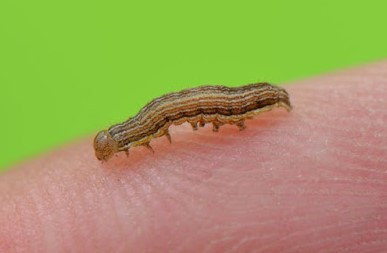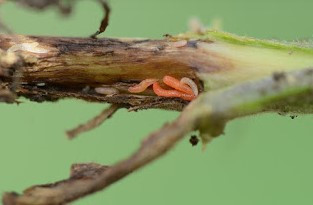By Bruce Potter
Armyworm
Economic threshold populations of true armyworm have been reported in Minnesota. Photos I received show a significant infestation in a sweet corn field that was planted into an oat cover. From the photos, the armyworms were above both corn and small grain thresholds.
Adult moths are attracted to areas of dense grass vegetation to deposit eggs. These grasses can include live rye or wheat cover crops, lodged grains or grasses in field borders.

Early instar true armyworm. Note net-like pattern on head
and the stripe pattern on the body. The larva has five pairs
of prolegs. Color can vary from tan-olive to nearly black.
As mentioned earlier this spring, scout these fields where corn was planted into a grass cover crop or where dense grassy weeds were controlled post-emerge. It would also be worth the effort to check wheat, barley, oat and rye crops statewide.
For more information see true armyworm in corn and true armyworm in small grains.

Soybean gall midge larvae are small white- to
orange-colored maggots.
Soybean gall midge
Over the next weeks, pay attention to wilting or stem lodged soybean plants on field borders adjacent to 2019 soybean fields. Look for the white to orange larvae under the outer layer of the soybean stem.
Source : umn.edu